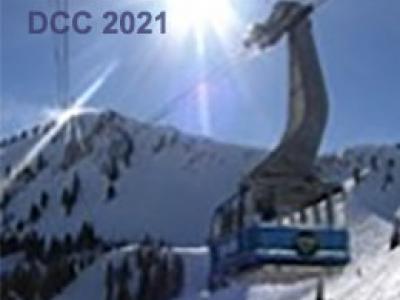
- Read more about Intra Block Partition Structure Prediction via Convolutional Neural Network
- Log in to post comments
In video coding, block partition segments image into non-overlap blocks for individual coding, the structure of which is becoming more and more flexible along with the development of video coding standards. Multiple types of tree structures have been proposed recently, which extensively improved the complexity of the encoding process due to recursive rate-distortion search for the optimal partition. In this paper, a two-stage Convolutional Neural Network (CNN) based partition structure prediction method is proposed to bypass the decision process of the block size in intra frame coding.
- Categories:
 41 Views
41 ViewsIn the Versatile Video Coding~(VVC) standard, adaptive loop filter~(ALF), including Geometry transformation-based Adaptive Loop Filter~(GALF) and Cross Component Adaptive Loop Filter~(CCALF), plays an essential role in reducing compression artifacts. However, it also has high coding complexity and requires many picture buffer accesses in the encoder that will increase external memory access and is unfriendly to the software and hardware design.
- Categories:
 369 Views
369 Views
- Read more about Flow-grounded Dynamic Texture Synthesis for Video Compression
- Log in to post comments
- Categories:
 46 Views
46 Views
- Read more about Deformable Convolution Network based Invertibility-driven Interpolation Filter for HEVC
- Log in to post comments
- Categories:
 42 Views
42 Views
- Read more about DCC_191_Privacy-preserving Compressed Sensing for Image Simultaneous Compression-encryption Applications
- Log in to post comments
In recent years, using compressed sensing (CS) as a cryptosystem has drawn more and more attention since this cryptosystem can perform compression and encryption simultaneously. However, this cryptosystem is vulnerable to known-plaintext attack (KPA) under multi-time-sampling (MTS) scenario due to the linearity of its encoding process.
- Categories:
 33 Views
33 Views
- Read more about Multi-Density Convolutional Neural Network for In-Loop Filter in Video Coding
- Log in to post comments
As the latest video coding standard, Versatile Video Coding (VVC) achieves up to 40% Bjøntegaard delta bit-rate (BD-rate) reduction compared with High Efficiency Video Coding (HEVC). Recently, Convolutional Neural Network (CNN) has attracted tremendous attention and shows great potential in video coding. In this paper, we design a Multi-Density Convolutional Neural Network (MDCNN) as an integrated in-loop filter to improve the quality of the reconstructed frames.
DCC-114.pptx
- Categories:
 92 Views
92 Views
- Read more about Parallel Implementations of Lambda Domain and R-Lambda Model Rate Control Schemes in a Practical HEVC Encoder
- Log in to post comments
- Categories:
 58 Views
58 Views
- Read more about Reducing Latency and Bandwidth for Video Streaming Using Keypoint Extraction and Digital Puppetry
- Log in to post comments
COVID-19 has made video communication one of the most important modes of information exchange. While extensive research has been conducted on the optimization of the video streaming pipeline, in particular the development of novel video codecs, further improvement in the video quality and latency is required, especially under poor network conditions. This paper proposes an alternative to the conventional codec through the implementation of a keypoint-centric encoder relying on the transmission of keypoint information from within a video feed.
- Categories:
 235 Views
235 Views
- Categories:
 59 Views
59 Views
- Read more about Bi-Prediction Enhancement with Deep Frame Prediction Network for Versatile Video Coding
- Log in to post comments
Bi-prediction is a fundamental module of inter prediction in the blocked-based hybrid video coding framework. Block-based motion estimation(ME) and motion compensation(MC) with simple models are adopted in bi-prediction process. Unfortunately, this MEMC-based algorithm can’t guarantee the prediction performance when it comes to videos with irregular motions. In this paper, a novel inter prediction scheme based on deep frame prediction network (DFP-net) is proposed to enhance bi-prediction accuracy, especially in complicated scenes.
poster-374-hust-th.pdf
- Categories:
 32 Views
32 Views